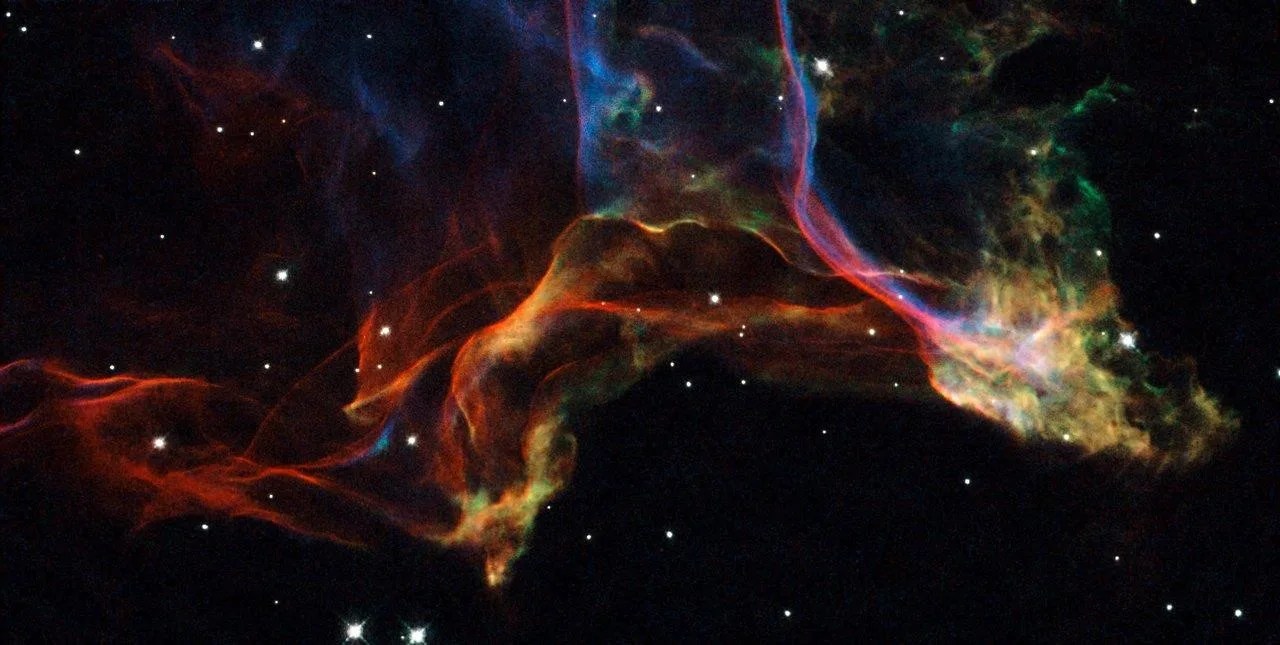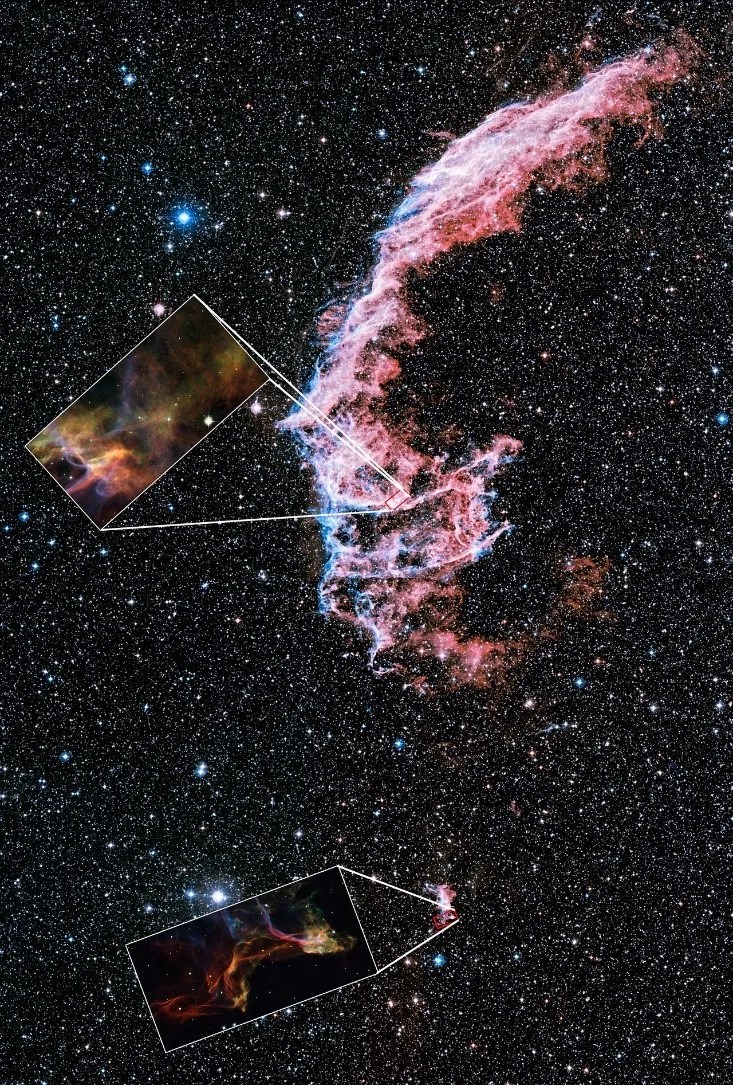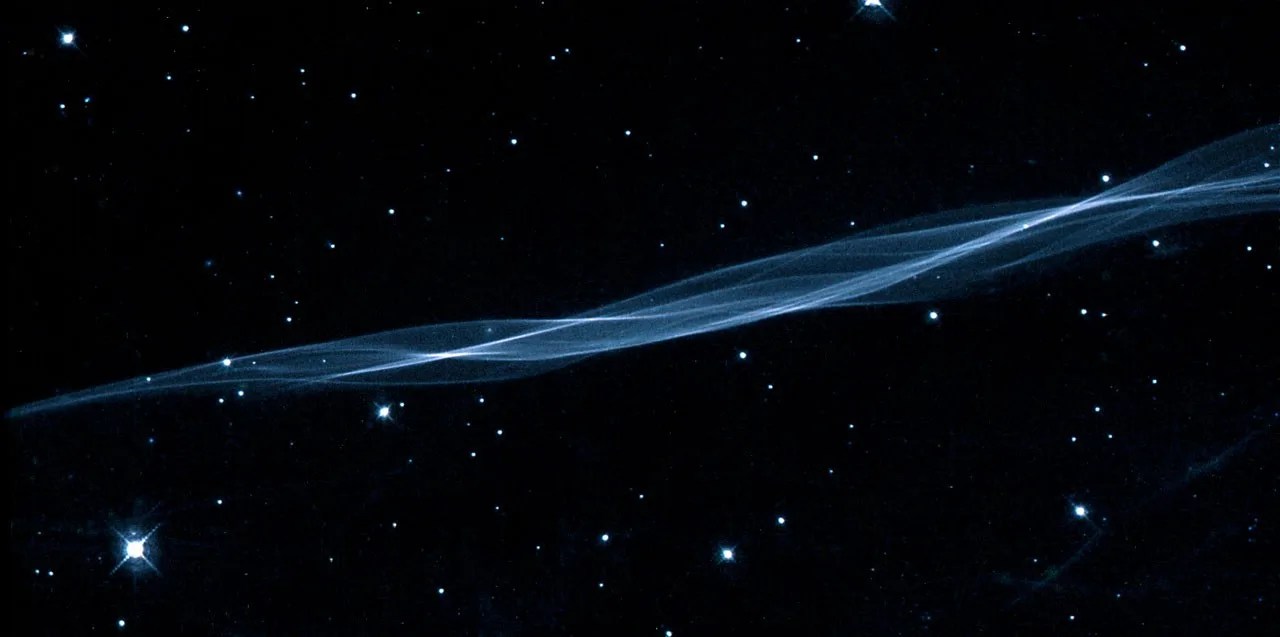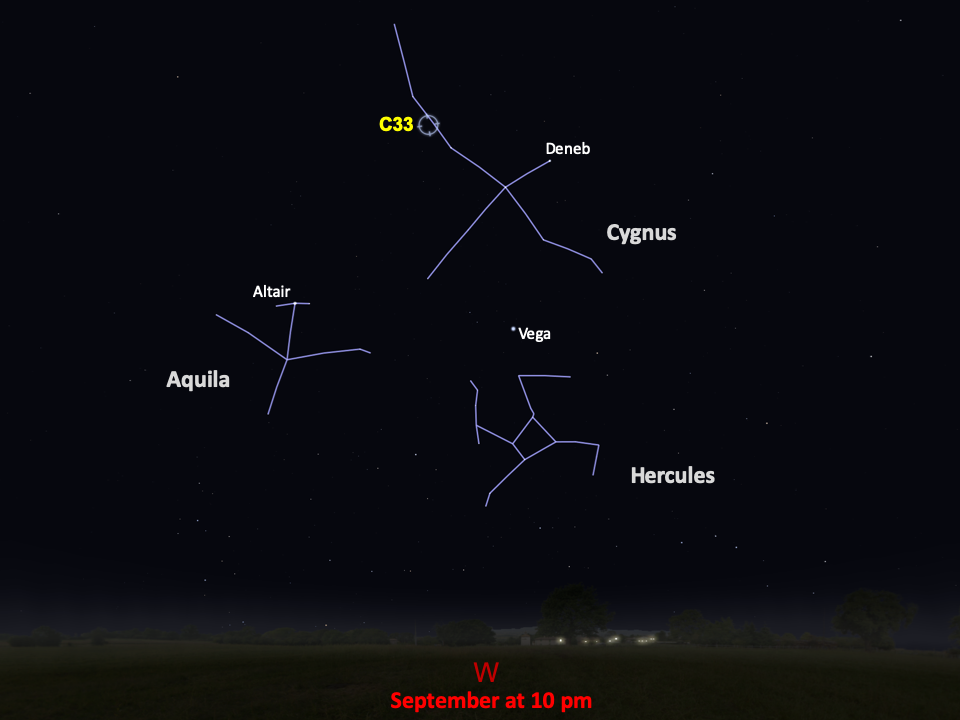Caldwell 33
Caldwell 33 is the eastern part of the Veil Nebula.
Distance
2,000 light-years
Apparent Magnitude
8.0
constellation
Cygnus
object type
Nebula, Supernova Remnant

Caldwell 33 is part of an extensive supernova remnant known as the Veil Nebula (or the Cygnus Loop). Caldwell 33 is often called the Eastern Veil, and includes regions also cataloged as NGC 6992 and NGC 6995. The opposite side of the Veil Nebula, the Western Veil, is Caldwell 34.


The Veil Nebula is the cosmic shrapnel left over from a star that exploded several thousand years ago. It lies within our own galaxy, about 2,000 light-years away in the Cygnus constellation. The entire Veil Nebula is 110 light-years across, covering an area of sky that’s six times bigger than that covered by the full moon.
This image combines observations taken with Hubble's Wide Field and Planetary Camera 2 in November 1994 and August 1997. In this tiny piece of Caldwell 33, rope-like filaments of gas intertwine and glow as the fast-moving debris from the supernova explosion plows into the surroundings and creates shock fronts. The sharper-looking filaments correspond to an edge-on view of a shock front, while the diffuse ones correspond to a face-on view.
Only the most massive stars end their lives as a supernova, but these explosions are responsible for creating all naturally occurring chemical elements heavier than iron. Many elements, such as copper, mercury, gold, iodine, and lead, were forged in these violent events. The expanding shells of supernova remnants mix with other materials in the galaxy and become the raw materials for new generations of stars and planets.
The Veil Nebula is a prototypical middle-aged supernova remnant. It is an ideal laboratory for studying the physics of supernova remnants because of its unobscured location in our galaxy, its relative closeness, and its large size. Astronomers used Hubble to take these observations of the Veil to better understand the shapes and motions of this and other supernova remnants. Hubble’s observations have also helped refine the Veil’s distance and age.
The Veil Nebula was found by astronomer William Herschel in 1784. This was followed up by Williamina Fleming’s discovery of a fainter portion of the nebula, referred to as Pickering’s Triangle, in 1904. The Veil Nebula is best viewed in early fall from the Northern Hemisphere (early spring in the Southern Hemisphere). As a magnitude-8 object, the nebula is not visible to the naked eye, but it can be seen through a telescope or even binoculars under a dark sky. A nebula filter will make the Veil easier to spot and help to pull out its wispy features.
For more information about Hubble’s observations of Caldwell 33, see:
Uncovering the Veil Nebula
A Tantalizing Veil


Glossary
Magnitude - The brightness of an astronomical object, represented by a number; bright objects have low numbers on the magnitude scale, while dim objects have high numbers.
Nebula - An interstellar cloud of dust and gas; either a location where new stars are being forged or a cloud of material ejected into space by a dying star.
Supernova - The explosion of a massive star at the end its life, which ejects material into space and causes the star to temporarily brighten in our sky.
Explore Hubble's Caldwell Catalog
The following pages contain some of Hubble’s best images of Caldwell objects.

Caldwell 1
Also known as NGC 188, this group of stars formed from a large cloud of gas making the stars roughly…

Caldwell 2
This shell of gas is expanding outward, away from the dying star within.

Caldwell 3
This barred spiral galaxy was first spotted by British astronomer William Herschel in April 1793 in the constellation Draco.




